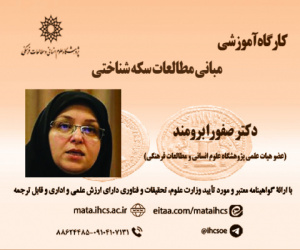بازنمایی آرامگاه خیام در شبکه های اجتماعی از منظر گردشگری ادبی
آرشیو
چکیده
با پیدایش و گسترش وسیع رسانه های نو، بخصوص در عرصه ی فضای مجازی، توجه دوباره به میراث ادبی و بازنمایی آن به روش های تازه و در اشکال نو امری، ضروری است. این رسانه ها قادرند فراتر از وظیفه ی اطلاع رسانی و تبلیغات ساده برای جذب گردشگران، بخصوص در مورد مکان های فرهنگی و ادبی، به منزله ی منبعی تفسیری و اکتشافی، به بازنمایی لایه های معنایی متعدد مکان بپردازند. آرامگاه خیام یکی از مکان های ادبی مهم ایران و از جاذبه های اصلی گردشگری شهر نیشابور است که با توجه به بُعد جهانی شخصیت خیام، می تواند انعکاس جهانی نیز داشته باشد. این پژوهش با هدف ارزیابی بازنمایی های رسانه ای آرامگاه خیام، محتوای تولید شده در رسانه های اینترنتی با روش تحلیل محتوا بررسی شده اند. نتایج این تحقیق نشان می دهد که محتوای تولید شده در رسانه ها عمدتاً به بازنمایی بنای آرامگاه و فلسفه ی ساخت آن با رویکرد اطلاع رسانی و بهره گیری از حداقل خلاقیت اختصاص دارد و درصد کمی از بازنمایی ها به تفسیر لایه های معنایی بیشتر این مکان پرداخته است. پیشنهاد این پژوهش توجه جدی تر به ابزار رسانه و امکانات و بلاغتِ رسانه و به کارگیری ایده های خلاق در تولید محتواهای تصویری و ادبی در راستای بازنمایی جذاب تر مکان های ادبی است.Representation of Khayyam's Tomb in Social networks from the perspective of literary tourism
The advent and widespread use of new media, particularly in the realm of virtual space, necessitates a focus on the literary legacy and its depiction in novel formats. These media can serve as interpretive and exploratory sources that represent the place's many levels of meaning, going beyond the simple tasks of informing and promoting tourist destinations, particularly those related to culture and literature. One of Iran's most significant literary sites, Khayyam's tomb is also a popular tourist destination in Neishabor, which can have an international impact because of Khayyam's multifaceted personality. In order to evaluate how Khayyam's tomb has been depicted in the media, the content produced in the online media has been investigated using the content analysis approach in this study. The study's conclusions indicate that most media portray the mausoleum and its design philosophy in an unimaginative and educational manner. The many levels of meaning associated with the site have only been partially unraveled by these depictions. This research suggests that media tools, facilities, and language be given more careful thought in order to create literary and visual content that is congruent with the more appealing portrayal of literary settings.







